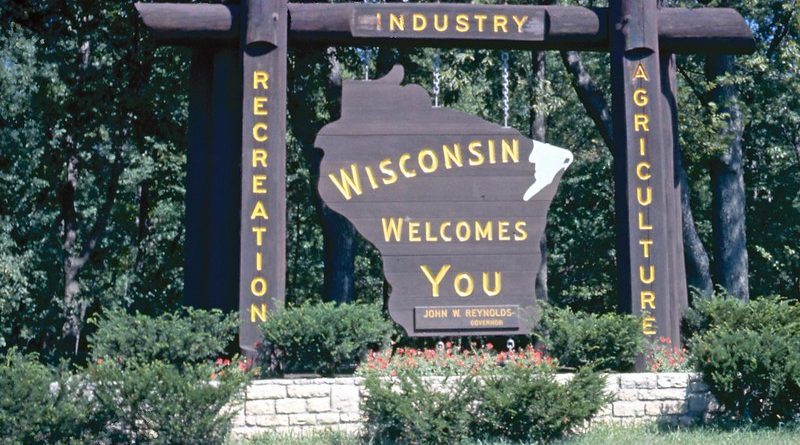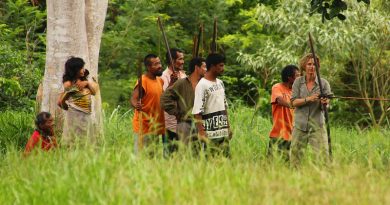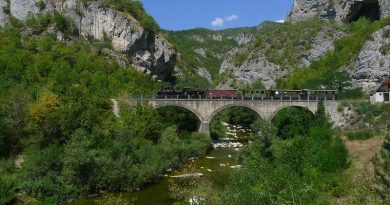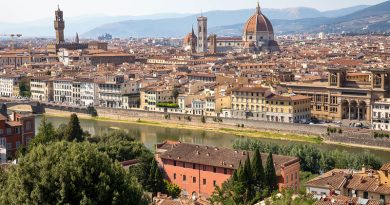Wisconsin Destination Guide
Most Americans equate dairy with Wisconsin, envisioning cows speckled across vast farmland and little more. And while the state’s National Football League team, the Green Bay Packers have a “cheese head” mascot, visitors to this northern Midwest state find there’s more to Wisconsin than milk. In fact, the state’s landscape is one of many contrasts. Rolling hills and narrow valleys in the southwest, stretching prairies to the southeast, majestic forests, marshes and lakes in the north, and north and east borders resting on the shorelines of Lake Michigan and Lake Superior, comprise the diverse terrain that gives Wisconsin its appeal for those who want a little bit of everything.
Madison
Built on an isthmus between lakes Monona and Mendota in southeast Wisconsin the state’s capital Madison is renowned for its 200 parks that provide year-round outdoor activities from hiking, biking, swimming and sailing to cross-country skiing, snow sailing and ice fishing. In the mood for shopping? Check out State Street in downtown Madison, a pedestrian mall lined with eclectic shops, restaurants and outdoor cafes. For a little night music, visitors can attend the city’s symphony or relax in local hotspots like Luther’s Blues, named after blues legend Luther Allison and enjoy live music from national acts as well as local favourites. With big city action, small town charm, and a recent award as the “Friendliest City in the Midwest” by Midwest Living Magazine and Madison, Wisconsin is a must for a Great Lakes holiday.
Milwaukee
Located on the southwest coast of Wisconsin, Milwaukee is home to both the original Miller brewery and the world-renown motorcycle company Harley-Davidson. Today, visitors can experience the beer brewing process first hand on the Miller Brewery Tour and enjoy their own frosty sample on the house. The city’s Major League baseball team is even named the Milwaukee Brewers! If you prefer leather and the open road, check out House of Harley in southern Milwaukee, where you can experience 50,000 square feet of biker heaven. For a change of pace, hop on one of Milwaukee’s many boat cruises in Lake Michigan and catch a glimpse of the city’s skyline.
Chequamegon-Nicolet National Forest
Covering over a million and a half acres of land in northern Wisconsin, the Chequamegon and Nicolet National Forests possess a history that corresponded with America’s and their names reflect its past diverse inhabitants. The name Chequamegon is derived from an Ojibway word meaning “place of shallow water,” and refers to Lake Superior’s Chequamegon Bay, while the Nicolet is named after Jean Nicolet, a French explorer who came to the Great Lakes Region in the 1600s to promote fur trading with the American Indians. Following closely behind the traders of the 17th century were lumbermen who established a timber industry that reached its peak in the 1920s. By then, the forests were at risk of disappearing, but by 1928 the federal government began buying land to preserve these forests. When the Great Depression rolled across the United States, thousands of young, unemployed men in the Civilian Conservation Corps established under Franklin D. Roosevelt in 1933, planted thousands of acres of jack pine and red pine, built fire lanes, and constructed recreational facilities across the national forests. Because northern Wisconsin experiences four distinct seasons, visitors at Chequamegon-Nicolet can take advantage of changing scenery – from spring fishing or canoeing to summer camping, hiking, mountain biking or horseback riding. As leaves turn vibrant oranges, reds and browns, setting surroundings in an autumn blaze of color, hunting season commences. And over a thick white blanket of snow, winter season visitors cross-country ski, snowshoe, and snowmobile.
Apostle Islands
Pristine stretches of sand beach, sea caves, ancient forests and the largest collection of lighthouses in the Northern hemisphere await you on the Apostle Islands in Lake Superior. These twenty-one primitive islands off the northernmost coast of Wisconsin do not have shops, hotels, or restaurants. By remaining for the most part virtually untouched by modern civilization, visitors typically visit the islands to kayak or sail around them and enjoy the peace, quiet, and raw beauty. Outdoor adventure companies offer daytime and overnight trips to sail and trek around the islands.
Michigan Destination Guide
On any map Michigan appears like a massive mitten floating in giant puddles we call the Great Lakes. Bordering four of America’s great inland lakes, Michigan has truly earned the title of a Great Lakes state. The state is divided in two: with upper and lower peninsulas. The more rugged, untouched Upper Peninsula faces Lake Superior on one side and Lake Michigan on the other, while the larger and more developed Lower Peninsula has shores on Lake Michigan, Huron, and Erie. As a four-season vacationland, Michigan appeals to travelers all year round. Depending on the season, you can enjoy everything from san dunes, ski slopes, lakeshore beaches and ice fishing.
Detroit
With its name almost synonymous to automobiles, Detroit, the city that put the world on wheels, is the birthplace of mass production. In fact, it continues to produce 25% of America’s automobiles, trucks and tractors. It’s the city of Ford, Chrysler and Dodge. Car manufacturers may have placed Detroit on the map, but, Michigan’s southwest city has several other characteristics of which to be proud. It’s one of the few cities in the United States where you can look south into Canada – across the Detroit River and into Windsor, Canada, famous for its booming casinos. In fact, poker chips, neon signs, and all-night buffet lines for gamblers is only a five-minute drive from downtown Detroit through the Detroit-Windsor tunnel or via the Ambassador Bridge. Detroit is also home of “hitsville, USA,” the legendary Motown record house where music greats like Diana Ross and the Supremes, Stevie Wonder, Marvin Gaye, the Jackson Five, and the Temptations recorded their first hits. The recording studio has since been transformed into a museum, with photographs, platinum records and memorabilia on display.
Sleeping Bear Dunes
If you’re in search of a slower pace of life than the production-line speed of Detroit, Sleeping Bear Dunes National Lakeshore on the north west tip of Michigan’s “mitten” is the prime destination. An Ojibway American Indian legend tells of a mother bear, who with her two little cubs tried to swim across Lake Michigan from Wisconsin to escape a forest fire. When the mother reached the shore safely, she climbed to the top of a bluff to search for her offspring who, exhausted, had fallen behind. They never reached her. Today, she can still be seen as the sleeping bear, a solitary dune that rises above the surrounding landscape. Her cubs are the Manitou islands, which lie several miles offshore. Visitors to Sleeping Bear Dunes can either dune climb 150 feet on foot through the dunes for a breathtaking panoramic view of the surrounding countryside, roll and tumble down hills of sugary sand, and explore both North and South Manitou islands on foot. The islands, less developed than the mainland are prime spots for backpacking, cross-country skiing and camping, so long as you follow the park’s wilderness regulations.
Isle Royale
Isle Royale may be the largest island in Lake Superior, but it is by far the least developed. There are no roads and no cars are allowed. The main island stretches 45 miles long and is surrounded by over 400 smaller islands. The only wildlife here are those animals able to fly, swim, drift across the water, or travel on ice, and the only human visitors to the island are those desiring to melt into the wilderness for a short while. Moose, wolf, fox are the dominant mammals, but before 1900, no moose existed on the island. Researchers have concluded that several moose must have swam to the island around 1912. Today, more than 700 moose populate the island. Wolves migrated across the ice and stayed. Campsites are scattered sparsely throughout the island and for those who prefer a warm bed, Rock Harbor Lodge on the east end of the island offers rooms, cabins, and a restaurant.
Mackinac Island
If islands are your thing but you’d prefer pedestrian lanes lined with ice cream parlors, florists, fudge shops and cozy eateries, then Mackinaw Island, located at the tip-top of Michigan’s “mitten” where Michigan’s upper and lower peninsulas meet. Throughout the years, the island has succeeded in preserving its timeless bubble. Cars are nonexistent on this quaint island, limiting transportation to horse and buggy, bicycle or foot. Instead of revved car engines, the clip-clopping of horse hooves drift in the air. Outside of the small island town, horse trails wind through wooded hills, while among the main strip of shops, pedestrians wander with ice cream, browse boutiques, or taste test the rich fudge that lures chocolate lovers everywhere. While the island is scattered with several campgrounds in addition to its cottages and summer homes, one can’t visit Mackinac island without a visit to The Grand Hotel. Perched atop a hill with a massive front porch that overlooks the roses and azaleas of formal gardens below, the Grand Hotel is more than just a larger than life bed and breakfast – it’s a historic landmark. American greats like Mark Twain often spent part of his summers here, lecturing occasionally in the hotel lobby. As the largest summer hotel since 1887, the Grand Hotel with its 343 uniquely decorated guest rooms and full breakfast has swept away guests to a bygone era of croquet on endless lawns, afternoon tea, and lazy days on a rocking-chair porch.




